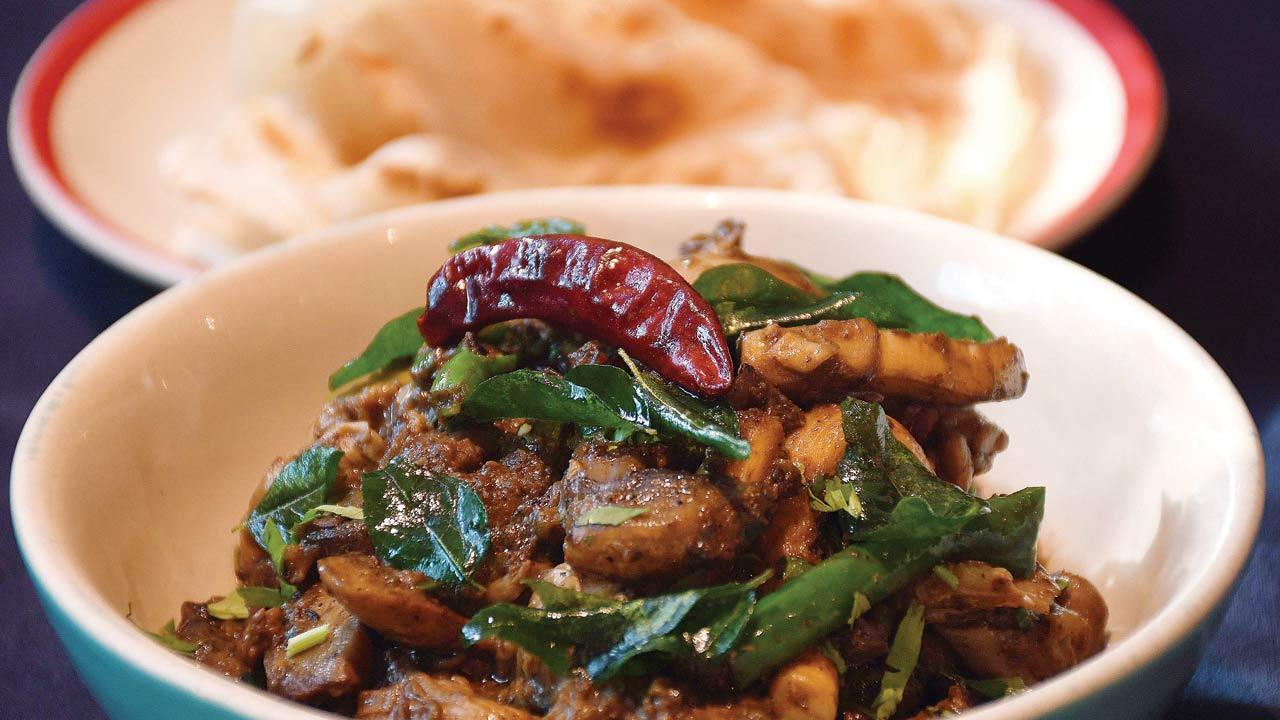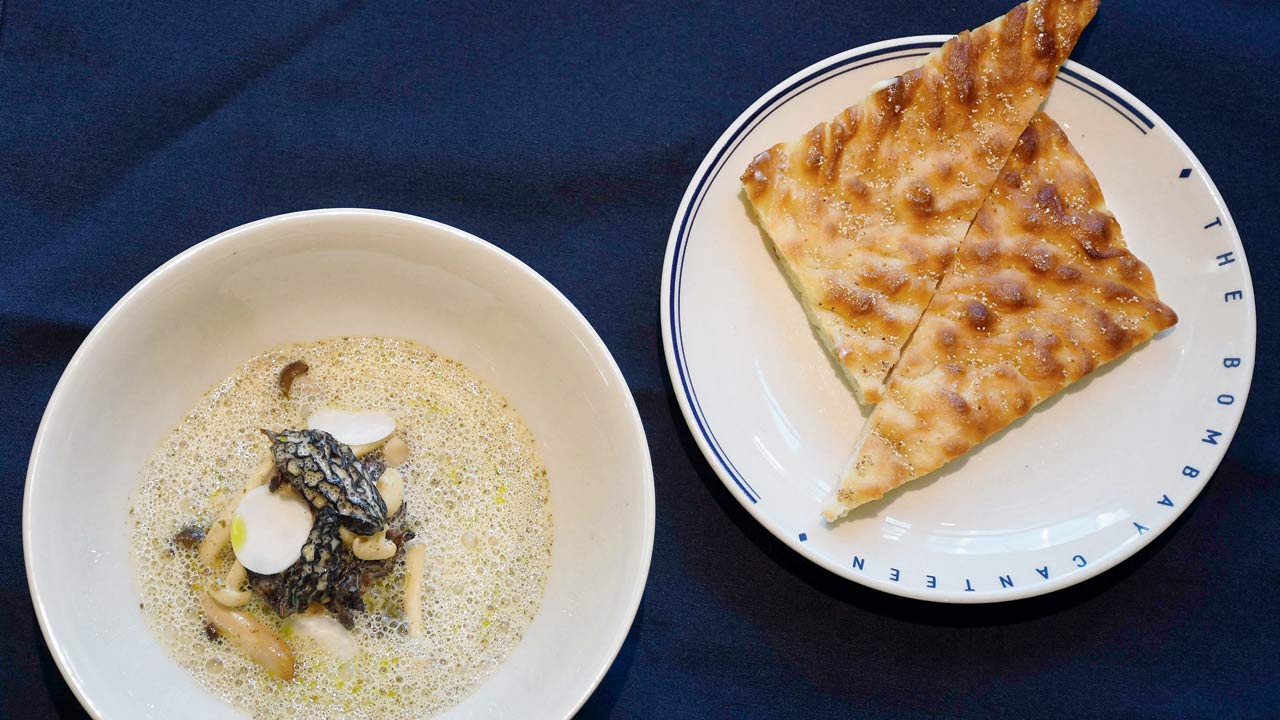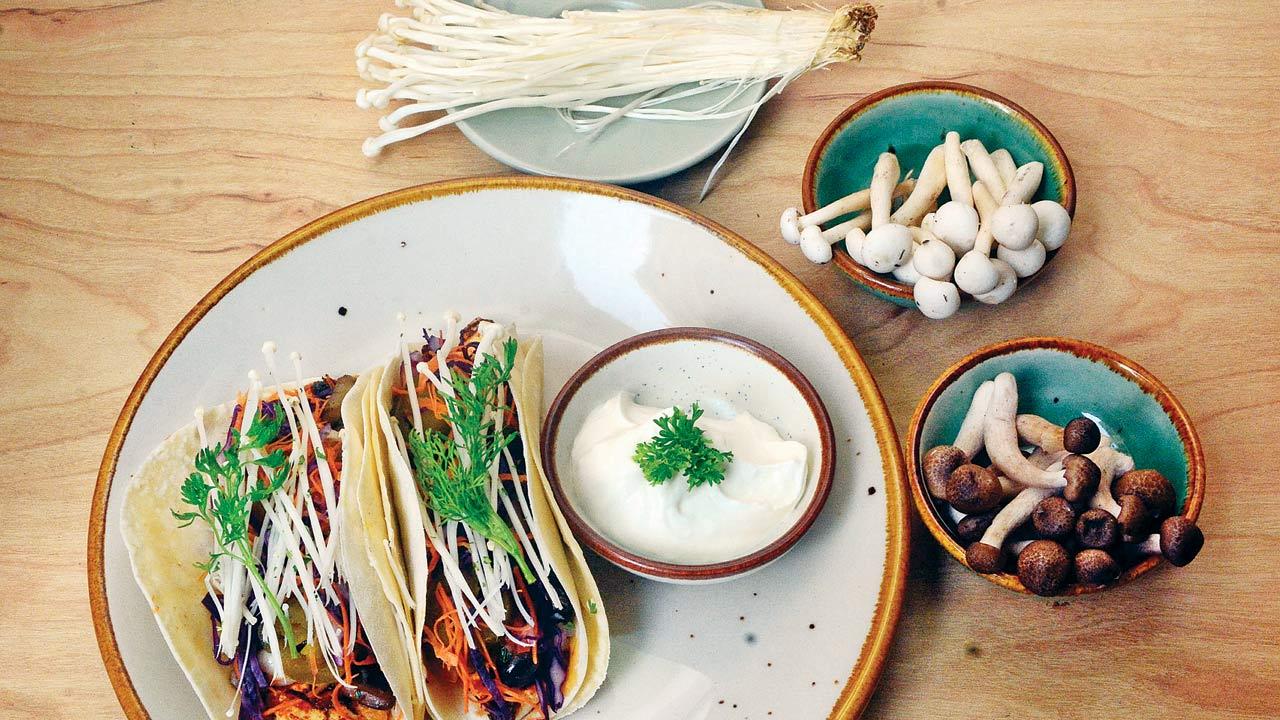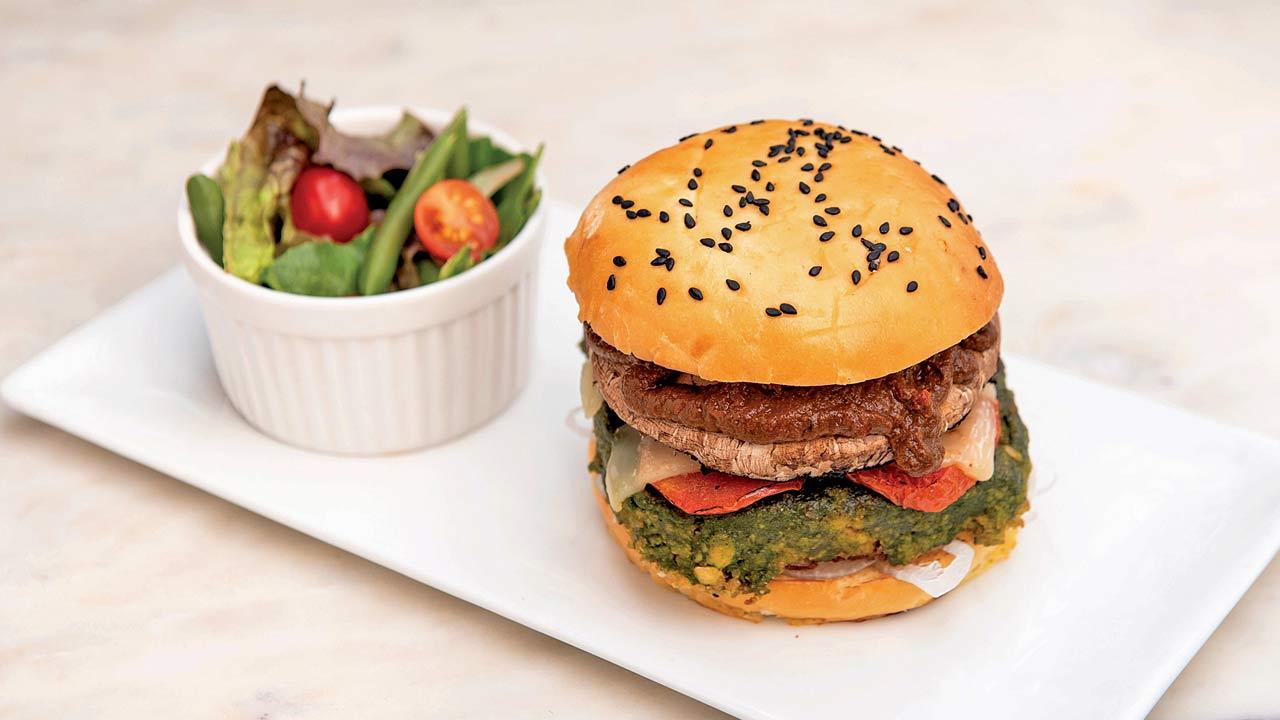Mushrooms have been lurking around in the culinary realm for a while now, but why are they suddenly sprouting in trend predictions, on restaurant menus and social media feeds? Experts decode the resurgence

The Kodava dish made with shimeji, pink oyster mushrooms, blue and grey oyster mushroom, and button mushrooms
It’s 2022 and last year’s top food trend—mushrooms—is showing no signs of stopping. Interestingly, what was once termed, dirty, unpalatable, and Kukurmutta (on which the dog pees) even, the foraged food has come a long way. Food forecasters predict that fungi will be the ingredient of the year, thanks to myriad health benefits, umami flavours, and their ability to slip into recipes without taking away from the main flavours. But, hang on, did mushrooms ever go out of fashion?
ADVERTISEMENT
Hussain Shahzad, executive chef at The Bombay Canteen and O Pedro, feels the reason fungi is trending is because many farms are growing interesting varieties of it in controlled temperatures with new-age farming techniques. Which means chefs don’t necessarily have to travel further than the produce aisle to explore them all. Take the gucchi and girda at The Bombay Canteen, for instance. While gucchi is a Kashmiri variant of spongy wild mushrooms with a pleated honeycomb-like texture, girda is a fermented bread. The mushroom dish at the Lower Parel outpost is made with haak saag (Kashmiri collard greens), kohlrabi (German turnip), and radish greens, which are cooked to a creamy puree. The girda can be paired with shimeji yakhni, made with locally sourced shimeji mushrooms. Grown near Pavana dam, these have a crunchy texture and nutty, savoury flavour. The Kodava mushroom dish, on the other hand, has assorted mushrooms—shimeji, pink oyster or blue and grey oyster and button mushrooms, along with dark toasted spices, and kachampuli, a dark vinegar made from the ripe fruits of the Garcinia gummi-gutta tree found in Coorg.

Chef Hussain Shahzad makes a dish using Kashmiri morel and shimeji at The Bombay Canteen. It’s usually paired with girda, fermented bread. Pics/Ashish Raje
The mushroom ceviche at O Pedro—Shahzad’s favourite—is made with a medley of pickled shimeji mushroom, oyster, and raw button mushrooms, nested in an airy lima bean foam with fresh haricot beans and crispy tempura crumble. “The recipe is a celebration of mushroom in every form and still brings out each of their flavour profiles and characteristics individually,” he adds.
Mushrooms have become a darling of the wellness world given their pervasiveness and low investment. Donna Deli’s chef Nester Gracias believes its easy availability in the local market has propelled its popularity. “Growing mushrooms is low investment with high profits. Lately, there has been a steady production of it in UP, Kerala, and Tripura. Using different techniques, we are seeing the commercial cultivation of button, oyster and paddy straw mushrooms, on special compost beds,” explains Gracias who uses mushrooms in stir-fry, omelettes, pizza topping, and soups. His favourite is the paprika mushroom and truffle toast with sourdough.

Urvika Kanoi, chef and owner of Cafe Duco, says a taco made with wild mushroom is her go-to dish. Pic/Sameer Markande
It’s local farms who are truly pushing the boundaries, thinks Vidit Aren, executive chef at Soufflé S’il Vous Plaît. His friend Rohaan Gawde, owner of The Mushroom Co., has in the last two years cultivated many exotic mushrooms—portobellos, criminis, oysters—accessible at a feasible price point to the restaurant industry and the end consumers. “These mushrooms have their origins in European cuisine, and if French and European cuisine make a comeback, these varieties might get further impetus.”

Souffle’s plant patty and portobello burger
The depth that mushrooms offers with their inherent richness also make it an effective plant-based alternative. The trick, however, is to understand what types of mushrooms will work best in dishes that traditionally use meat. According to experts, while crimini works well in pasta, the portobello is ideal to throw on the grill or slide into sandwiches. Urvika Kanoi, chef and owner of Cafe Duco, says fungi is immensely versatile and is perfect for someone looking to reduce or eliminate meat from their diet. From stew and stocks to snacks, and mains, mushrooms double up as robust nutritional swaps in meaty recipes. “It adds a lot of character and flavour to Chinese, Thai, Japanese, Korean and European cuisines like French and Mediterranean,” says Kanoi.

Chef Hussain Shahzad, Vidit Aren, Nester Gracias
Mushrooms, as an ingredient, are extremely adaptable. Although delicious and filling, mushrooms are capable of both, changing and not changing the flavour of a dish, observes Kanoi. While baby belle and button add a gentle elevation, enoki and black mushrooms are absolute flavour bombs. “I use enoki, shimeji, baby belle, portobello, oyster, porchini, chanterelles and king trumpet when available. They offer varied textures, from crunch and melt-in-the-mouth to chewy and meaty,” she says. Shahzad agrees. “While oysters are chewy and meat-like, button mushrooms have a snap texture,” he says. The fact that they are low in calories and aid brain health are more reasons why you should include mushrooms in your diet, say experts. Kanoi’s favourite is the halloumi and mixed mushroom taco. “The meatiness of the mushrooms, salty chewiness of halloumi, and burst of the freshness of the raw enoki makes it my go-to!” she says.

Chefs are working to bust the myth that mushrooms lack a flavour profile of their own. For example, the morel mushrooms which are sourced from Kashmir and Himachal Pradesh, have an earthy, robust and meat-like aroma. They are known to withstand long and intense cooking processes. “They are also becoming popular as sauces [oyster] and being dried and spun into a powder to add umami or a rustic flavour to the dish,” notes Shahzad. According to him, most mushrooms have high moisture or water content, which means they take on a lot more flavour. “This works well in Indian food which is already flavour forward. The idea is to take a nuanced approach and find the right balance where the base dish and the mushroom complement each other.”
 Subscribe today by clicking the link and stay updated with the latest news!" Click here!
Subscribe today by clicking the link and stay updated with the latest news!" Click here!







